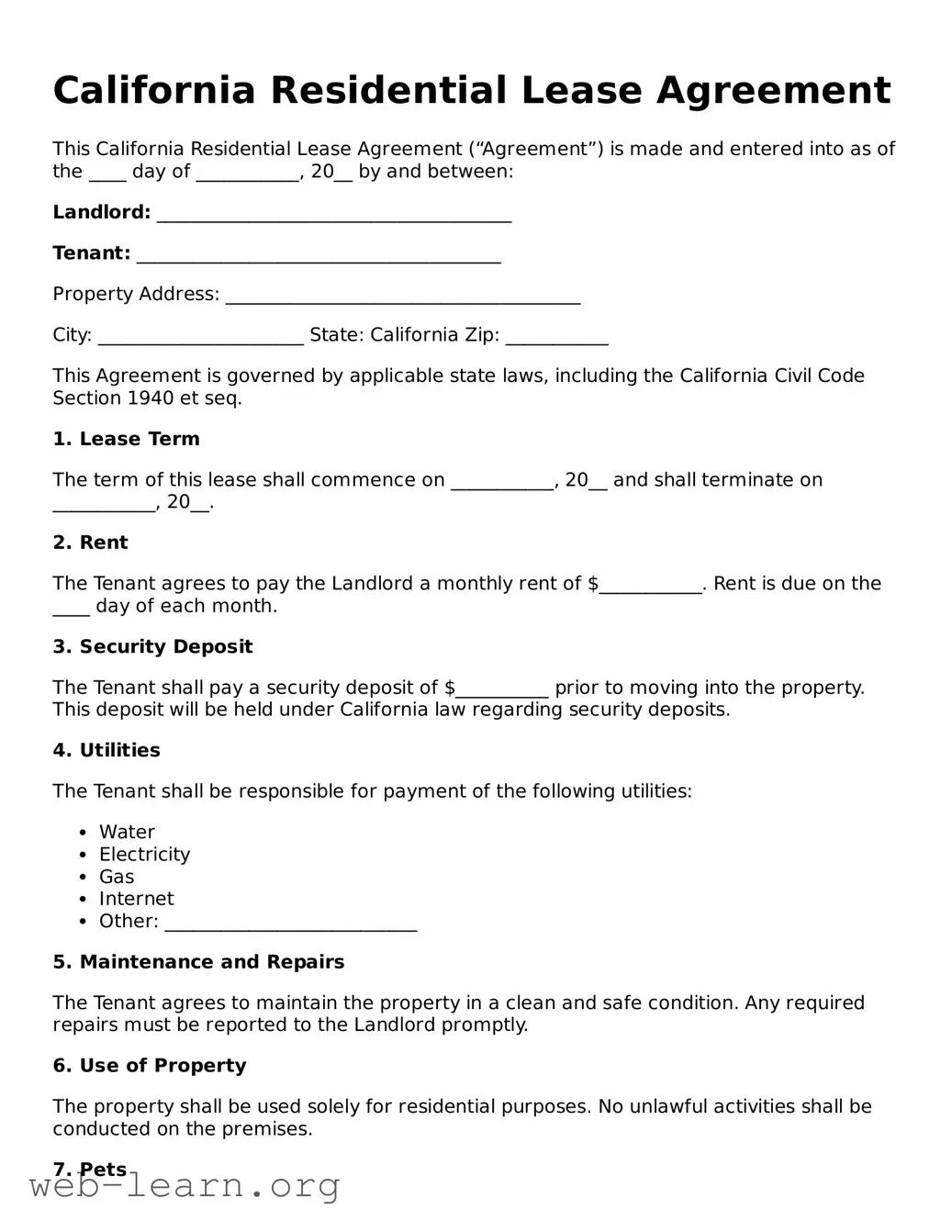California Residential Lease Agreement
This California Residential Lease Agreement (“Agreement”) is made and entered into as of the ____ day of ___________, 20__ by and between:
Landlord: ______________________________________
Tenant: _______________________________________
Property Address: ______________________________________
City: ______________________ State: California Zip: ___________
This Agreement is governed by applicable state laws, including the California Civil Code Section 1940 et seq.
1. Lease Term
The term of this lease shall commence on ___________, 20__ and shall terminate on ___________, 20__.
2. Rent
The Tenant agrees to pay the Landlord a monthly rent of $___________. Rent is due on the ____ day of each month.
3. Security Deposit
The Tenant shall pay a security deposit of $__________ prior to moving into the property. This deposit will be held under California law regarding security deposits.
4. Utilities
The Tenant shall be responsible for payment of the following utilities:
- Water
- Electricity
- Gas
- Internet
- Other: ___________________________
5. Maintenance and Repairs
The Tenant agrees to maintain the property in a clean and safe condition. Any required repairs must be reported to the Landlord promptly.
6. Use of Property
The property shall be used solely for residential purposes. No unlawful activities shall be conducted on the premises.
7. Pets
Pets are not allowed on the premises unless written consent is received from the Landlord. If allowed, an additional pet deposit of $___________ will be required.
8. Termination
Either party may terminate this Agreement as provided by California law. A written notice of at least ____ days must be provided.
9. Governing Law
This Agreement shall be governed by the laws of the State of California.
IN WITNESS WHEREOF, the parties have executed this Agreement as of the date first above written.
Landlord Signature: _______________________ Date: ____________
Tenant Signature: ________________________ Date: ____________
